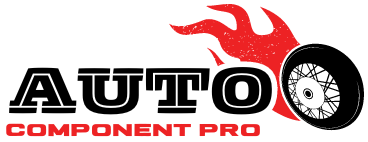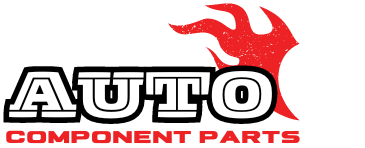If you’ve noticed excessive tread wear on the inner edges of your tires, you’re dealing with inner tire wear. This uneven wear can compromise traction and handling, make tires more prone to punctures, and lead to blowouts if ignored. Fixing inner tire wear is crucial for performance and safety. In this comprehensive guide, we’ll cover common causes, diagnosis, correction steps, and prevention tips.
What Causes Inner Tire Wear?
Inner tire wear has a few potential leading causes:
a. Wheel Alignment Issues
One of the most common causes of inner tire wear is improper wheel alignment. Alignment refers to the precise adjustment of the angles of the wheels relative to the vehicle and each other. When alignment is off, it can cause uneven treadwear.
The main alignment issue that contributes to inner wear is negative camber. This is when the tops of the wheels tilt slightly inward at the top. A negative camber causes the inner tread to bear more pressure against the road surface, wearing down the edges faster.
The toe is another alignment parameter that can accelerate inner edge wear. Toe refers to the parallelism of the two front or two rear wheels. Excess toe-in or toe-out will scrub the inner or outer tread surfaces and cause uneven wear over time.
b. Worn Suspension Components
The suspension on your vehicle contains components like ball joints, control arms, bushings, struts, and shocks. When these wear out from age and mileage, wheel alignment can shift while driving. This allows the tires to move outside their proper positions and start wearing unevenly.
Inner tire wear is often an early indicator that suspension components need replacement. Worn parts introduce extra play and instability that disrupts proper tire and wheel positioning.
c. Improper Inflation
When tire inflation pressure is too low or too high over long periods, tread life suffers. With underinflation, the center of the tread doesn’t contact the road fully. More pressure is put on the outer edges, causing them to wear faster.
Overinflation is the inverse – the center tread bears more force, wearing out quicker than the edges. Consistent over or underinflation by as little as 5 PSI can lead to uneven treadwear.
d. Aggressive Driving
Making frequent sharp turns and cornering at high speeds forces the tires beyond their normal load. The lateral grip and friction this generates can scrub the inside edges of the tires. Heavy acceleration and braking have a similar effect. Aggressive driving essentially overworks the inner tread surfaces, causing them to wear prematurely.
Diagnosing Inner Tire Wear
Detecting inner tire wear early is important to correct it before it leads to blowouts or accidents. Here are the telltale signs:
a. Uneven Tread Depth
Crouch down and look across the tread of each tire. Turn the steering wheel to see the inner edges more easily. If the depth of the inner tread appears significantly lower than the middle and outer edges, that’s inner-wear.
You can use a tread depth gauge to measure precisely. Place it across the tread in several spots to compare. Innerwear will show at least 2/32nds of an inch less depth on the inner edges.
Run your fingers along the tread to feel for a valley or dip in the inner shoulders. If you can feel a height difference, the wear is getting severe.
b. Vibration at Highway Speeds
As inner tire wear advances, tire vibration, and steering wheel shakes will occur when driving at highway speeds. This is due to the imbalance created by sections of the tread being lower than others. Rotational and vibration forces build-up due to the uneven tread depths.
You’ll typically feel vibration most prominently around 50-70 mph if inner wear is the cause. The shaking sensation will worsen as wear increases over time if alignment isn’t addressed.
c. Visible Negative Camber
Take a look at your wheels from both the front and back. If the top looks tilted inward, you have a negative camber that could be initiating inner tire wear. The camber angle should be subtle – excessive tilt signifies alignment needs adjustment.
Camber outside factory specifications will accelerate inner edge wear rapidly. Inspecting camber alignment is an important diagnostic step.
Fixing Inner Tire Wear Step-by-Step
Correcting inner tire wear involves a combination of mechanical repairs, new tires, and prevention:
A. Wheel Alignment
The first step is having your mechanic perform a four-wheel alignment. Ensuring proper alignment will eliminate misadjusted camber, toe, and other parameters as the root cause of uneven treadwear.
Communicate that you have inner edge wear so they can pay special attention to adjusting the camber in spec. This may involve cam bolts, eccentric bushings, or camber kits if available.
Fresh alignment is key to stopping further inner edge wear damage. Expect to pay $50-$150 for this service.
b. Inspecting and Replacing Suspension Parts
Have your mechanic thoroughly inspect the condition of all suspension components like ball joints, control arms, bushings, struts, and shocks. If any worn parts are discovered that allow alignment to shift, they must be replaced.
This preserves proper wheel positioning and prevents rapid re-occurrence of inner tire wear after alignment. Bushings, joints, and struts deteriorate over time, so replacements may be due.
c. Tire Rotation and Inflation
Once alignment is corrected, establishing consistent tire rotation and inflation is important. Rotating tires every 5,000-8,000 miles distributes wear evenly across the tread. Stick to the rotation pattern in your owner’s manual.
Check inflation pressure monthly and inflate to the PSI on your door placard or manual. Tires can lose 1-2 PSI per month naturally. Underinflation accelerates inner wear, while overinflation wears the center tread faster.
d. Tire Shaving
If your inner edge wear isn’t severe (less than 2/32” depth difference), shaving the tires is an option. This involves mechanically cutting the inner edges down to match the rest of the tread depth.
Shaving can prolong the life of tires by another 10,000-20,000 miles. Expect to pay $40-$75 per tire for shaving. It buys time before new tires are required.
e. New Tires
If the inner wear is beyond shaving, new replacement tires will be required. Don’t try driving much further on severely uneven tread – this is a safety hazard. When buying new tires, upgrade to a quality long-lasting brand to improve longevity.
Immediately have the new tires aligned to prevent uneven wear from recurring right away. New tires and fresh alignment sets you up for maximum mileage.
Preventing Inner Tire Wear
Once tires are corrected or replaced, consistent prevention habits are essential to avoid repeat inner wear issues:
- Maintain alignment – have it inspected annually and adjusted if needed
- Inspect suspension parts regularly – replace any worn components
- Rotate tires every 5,000-8,000 miles religiously
- Check tire pressures monthly – inflate to door placard PSI
- Avoid aggressive cornering and rapid acceleration/braking
- Install quality tires rated for long mileage
- Re-align wheels after new tires or suspension work
Catching alignment problems and worn suspension parts early allows them to be corrected before ruining tires. Proper inflation, avoidance of aggressive driving, quality tires, and regular rotations also help prevent fast inner edge wear.
Staying vigilant with preventative maintenance and inspections will ensure you maximize the life of your tires. Inner edge wear can be addressed and avoided with a diligent, proactive approach. Your tires will last their full potential and keep you safe.
Final Words
Understanding how to fix inner tire wear is crucial for maintaining optimal tire performance and safe driving. By identifying the causes of inner tire wear, including wheel alignment issues, worn suspension components, improper inflation, and aggressive driving, you can take the necessary steps to prevent uneven tread wear. Regular inspections and maintenance will help you catch inner tire wear early and address it before it leads to more significant problems.
Whether you need a four-wheel alignment, new suspension components, or fresh tires, investing in corrective measures is essential to prolonging the life of your tires and keeping you and your passengers safe on the road. Remember, proper maintenance today can help you avoid costly and dangerous issues down the road.
When addressing the issue of inner tire wear, it’s crucial to understand the underlying causes and effective solutions. However, it’s equally important to recognize when your car tire isn’t spinning freely.
This could be a symptom of a related problem or an entirely different issue that requires immediate attention. For a detailed insight into this specific challenge and its solutions, explore our guide on “Car Tire Not Spinning Freely,” which complements the information provided here and offers a holistic approach to tire maintenance.
However, it’s not just inner tire wear that car owners should be mindful of. Outer tire wear, though stemming from different causes, is equally important to address for maintaining vehicle safety and tire longevity. To learn more about effectively managing outer tire wear and ensuring your vehicle’s tires are in top condition, explore our detailed guide on ‘How to Fix Outer Tire Wear?‘


